
Kykkos Monastery: The Jewel of Cyprus' Troodos Mountains
Discover the historic Kykkos Monastery in Cyprus' Troodos Mountains, renowned for its sacred icon of the Virgin Mary, stunning frescoes, and serene surroundings.
Nestled in the heart of the Troodos Mountains, Kykkos Monastery is one of Cyprus' most treasured religious sites. Founded in the 11th century by Byzantine emperor Alexios I Komnenos, this monastery is renowned for its opulent decor and rich history. The most famous feature of Kykkos is the icon of the Virgin Mary, believed to be one of the three icons painted by the apostle Luke. This sacred artifact attracts pilgrims from all over the world, adding a spiritual aura to the tranquil setting. The monastery's architecture is an exquisite blend of Byzantine and modern styles, with its vibrant frescoes and intricate mosaics capturing the eye and imagination. As you wander through its halls, you'll find impressive artifacts, including ancient manuscripts, vestments, and religious relics that tell the story of Cyprus' religious and cultural evolution. The tranquil courtyards and lush surroundings provide a peaceful retreat, making it a perfect escape for those seeking serenity and reflection. Aside from its religious significance, Kykkos Monastery offers breathtaking views of the surrounding mountains and valleys. The journey to the monastery itself is a scenic adventure, with winding roads and picturesque landscapes that make the trip all the more rewarding. Nearby, you can explore charming villages, taste local delicacies, and experience the warm hospitality of the Cypriot people. Whether you're a history enthusiast, a spiritual seeker, or simply a nature lover, Kykkos Monastery promises a memorable and enriching experience.
Local tips in Kykkos Monastery
- Visit early in the morning to avoid crowds and enjoy a peaceful experience.
- Dress modestly out of respect for the religious site; shoulders and knees should be covered.
- Bring a camera to capture the breathtaking views and intricate artwork.
- Check the weather before your visit, as the mountain climate can be unpredictable.
- Combine your trip with a visit to nearby Troodos villages for a complete cultural experience.
Kykkos Monastery: The Jewel of Cyprus' Troodos Mountains
Nestled in the heart of the Troodos Mountains, Kykkos Monastery is one of Cyprus' most treasured religious sites. Founded in the 11th century by Byzantine emperor Alexios I Komnenos, this monastery is renowned for its opulent decor and rich history. The most famous feature of Kykkos is the icon of the Virgin Mary, believed to be one of the three icons painted by the apostle Luke. This sacred artifact attracts pilgrims from all over the world, adding a spiritual aura to the tranquil setting. The monastery's architecture is an exquisite blend of Byzantine and modern styles, with its vibrant frescoes and intricate mosaics capturing the eye and imagination. As you wander through its halls, you'll find impressive artifacts, including ancient manuscripts, vestments, and religious relics that tell the story of Cyprus' religious and cultural evolution. The tranquil courtyards and lush surroundings provide a peaceful retreat, making it a perfect escape for those seeking serenity and reflection. Aside from its religious significance, Kykkos Monastery offers breathtaking views of the surrounding mountains and valleys. The journey to the monastery itself is a scenic adventure, with winding roads and picturesque landscapes that make the trip all the more rewarding. Nearby, you can explore charming villages, taste local delicacies, and experience the warm hospitality of the Cypriot people. Whether you're a history enthusiast, a spiritual seeker, or simply a nature lover, Kykkos Monastery promises a memorable and enriching experience.
When is the best time to go to Kykkos Monastery?
Iconic landmarks you can’t miss
Timios Stavros Monastery
Discover the tranquility and rich heritage of Timios Stavros Monastery in Omodos, Cyprus, a perfect blend of spirituality and scenic beauty.

Millomeris Waterfall Trail
Discover the breathtaking beauty of Millomeris Waterfall Trail, a serene hiking area in Pano Platres, Cyprus, perfect for nature lovers and adventure seekers.

Artemis Trail
Explore the breathtaking Artemis Trail in the Troodos Mountains, a premier hiking destination in Cyprus offering stunning views and rich biodiversity.

Trooditissa Monastery
Discover the spiritual and architectural beauty of Trooditissa Monastery in the serene Troodos Mountains, a hidden gem of Cyprus.

Monastery of Saint John Lampadistes
Explore the serene beauty and historical significance of the Monastery of Saint John Lampadistes in the heart of Cyprus.

Troodos Botanical Garden
Discover the serene beauty of Troodos Botanical Garden, a haven of diverse flora nestled in the stunning Troodos Mountains of Cyprus.

Millomeris Waterfall
Explore the serene beauty of Millomeris Waterfall in Pano Platres, a stunning natural attraction in Cyprus perfect for adventure seekers and nature lovers.

Church of Saint Nicholas of the Roof
Discover the serene beauty and rich history of the Church of Saint Nicholas of the Roof in Agios Nicolaos, a must-visit Greek Orthodox gem in Cyprus.

Metochi Kykkou
Uncover the serene landscapes and rich heritage of Metochi Kykkou in Nicosia, Cyprus, where nature meets spirituality in perfect harmony.

Throni
Explore Throni, a tranquil church in Mylikouri, Cyprus, known for its breathtaking views and rich spiritual heritage.

Monastery of the Virgin Mary of Arakas
Discover the serene beauty and rich history of the Monastery of the Virgin Mary of Arakas, a Byzantine gem in the heart of Cyprus.
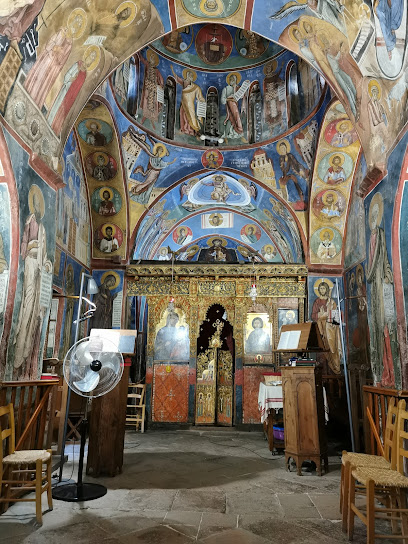
Μονή Παναγίας Τρικουκκιώτισσας
Discover the serene Moni Panagias Trikukkiotis, a historic Greek Orthodox monastery in Cyprus, surrounded by nature's tranquility and rich cultural heritage.

Museum of Kykkos Monastery
Explore the Museum of Kykkos Monastery: A Journey Through Cyprus's Rich Cultural and Religious Heritage in the Heart of the Troodos Mountains.

Cedar Valley
Discover the serene beauty of Cedar Valley, a peaceful park in Cyprus perfect for nature lovers and those seeking tranquility.

Υψωση Τιμίου Σταυρού
Discover the beauty and spirituality of Timios Stavros Monastery in Pedoulas, a serene retreat in the heart of Cyprus' mountainous landscape.

Unmissable attractions to see
Υδροπάρκο Φασουρίου Watermania
Experience the ultimate water adventure at Fasouri Watermania, Cyprus' largest water park, offering thrilling slides and relaxing pools for the whole family.

Troodos Botanical Garden
Explore the enchanting Troodos Botanical Garden in Cyprus, a serene retreat showcasing diverse plant species and breathtaking mountain views.

Platania
Explore Platania National Reserve, a serene oasis in Cyprus, where nature and adventure await every traveler in a stunning landscape.

Platres Chocolate Workshop
Discover the enchanting Platres Chocolate Workshop in Cyprus, where the art of chocolate-making meets the beauty of nature.

Marina's Rope Park
Experience thrilling adventures and breathtaking views at Marina's Rope Park, a top amusement park destination in Cyprus.

Zambartas Wineries
Discover the flavors of Cyprus at Zambartas Wineries, where stunning views and exceptional wines await every visitor.

Monastery of the Virgin Mary of Arakas
Discover the historic Monastery of the Virgin Mary of Arakas, a stunning example of Byzantine architecture and a serene retreat in the heart of Cyprus.

Smigies Nature Trail
Explore the Smigies Nature Trail in Cyprus, a stunning national park showcasing breathtaking landscapes, diverse wildlife, and a serene hiking experience.

Mesa Potamos (Argolachania) Picnic Site
Discover peace and tranquility at Mesa Potamos, a picturesque picnic site in Moniatis, Cyprus, perfect for BBQ lovers and nature enthusiasts.

Panagia Amirous Monastery
Discover the spiritual tranquility of Panagia Amirous Monastery in Mathikoloni, a serene haven of culture and history in Cyprus.

Μονή Παναγίας Τρικουκκιώτισσας
Discover the tranquility and rich heritage of the Monastery of Panagia Trikukkiotissa, a hidden gem in the heart of Cyprus.

Museum of Kykkos Monastery
Explore the Museum of Kykkos Monastery, a cultural haven in Cyprus showcasing rich heritage and spiritual treasures.
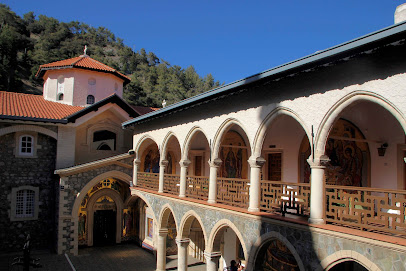
Local Archaeological Museum of Kourion
Explore the rich history of Cyprus at the Local Archaeological Museum of Kourion, showcasing treasures from the ancient city and beyond.

Cedar Valley
Discover the natural beauty of Cedar Valley, a serene park in Cyprus perfect for relaxation, picnics, and nature walks.

Nelion Winery
Experience the heart of Cypriot winemaking at Nelion Winery, where exquisite wines and stunning vineyard views await you.

Essential places to dine
Baths Of Aphrodite Restaurant
Experience exquisite local cuisine with stunning views at Baths of Aphrodite Restaurant in Neo Chorio, Cyprus.

Skylight
Experience exquisite dining at Skylight in Pano Platres – where local flavors meet breathtaking mountain views.
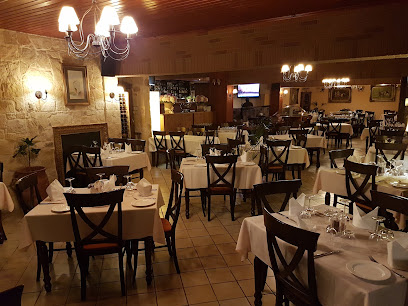
The Village Restaurant (Tavern)
Discover authentic Cypriot flavors at The Village Restaurant in Pano Platres – a must-visit culinary destination for tourists.

Stou Kir Yianni Guest house / Restaurant/Wine cellar
Experience authentic Cypriot cuisine and warm hospitality at Stou Kir Yianni Guest House & Restaurant in charming Omodos.

Psilo Dendro
Experience authentic Cypriot cuisine at Psilo Dendro in Pano Platres—where nature meets flavor in every dish.

Makris Restaurant
Experience authentic Cypriot cuisine at Makris Restaurant in Moniatis—where every dish tells a story.

Strofi sti gefsi
Experience the taste of Cyprus at Strofi sti gefsi – where authentic flavors meet warm hospitality in Mandria.

Podji Poda
Experience authentic Cypriot cuisine at Podji Poda in Kakopetria - where tradition meets taste in a cozy setting.

Το παλιό σινεμά
Savor traditional Cypriot flavors in a charming setting at Το Παλιό Σινεμά, perfect for families and food lovers alike.

Seven Hills Restaurant Tavern
Discover authentic Cypriot cuisine at Seven Hills Restaurant Tavern in Agros, where stunning views meet delightful flavors.

Louis Restaurant
Experience authentic Cypriot cuisine at Louis Restaurant in Prodromos - where tradition meets flavor in every dish.
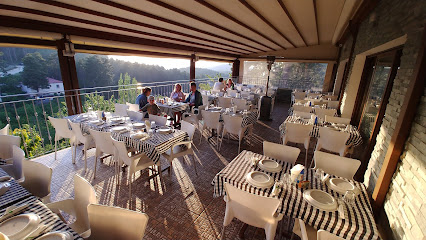
Stavros Restaurant
Experience authentic Cypriot cuisine in Pedoulas at Stavros Restaurant—where every dish tells a story.

Berengaria Cafe, Bar & Restaurant
Discover authentic Cypriot cuisine at Berengaria Cafe, Bar & Restaurant nestled in scenic Prodromos with stunning mountain views.

Fereos Restaurant
Experience authentic Cypriot cuisine amidst the stunning scenery of Troodos at Fereos Restaurant.
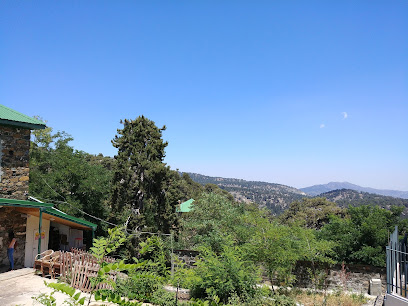
Markos
Experience authentic Cypriot cuisine with breathtaking views at Markos in Kalopanayiotis.
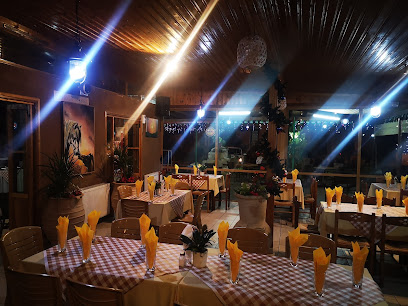
Markets, malls and hidden boutiques
Kykkos Monastery
Discover the serene beauty and rich history of Kykkos Monastery, a must-visit spiritual site in the stunning Troodos Mountains of Cyprus.
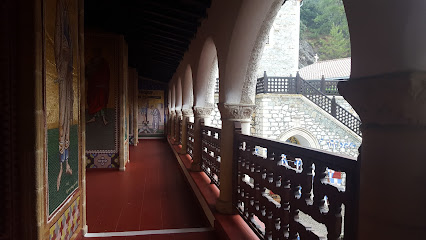
Θρονί της Παναγίας
Discover the serene beauty and spiritual significance of the Throne of the Virgin Mary in Cyprus, a captivating church surrounded by nature.

Throni
Discover the tranquil beauty of Throni, a historical church in Mylikouri, Cyprus, perfect for spiritual reflection and cultural immersion.

Μονή Παναγίας Τρικουκκιώτισσας
Explore the Monastery of Panagia Trikoukkiotissa, a serene retreat in the heart of Cyprus, rich in history and surrounded by stunning natural beauty.

Museum of Kykkos Monastery
Explore the Museum of Kykkos Monastery, a cultural gem showcasing Cyprus's rich religious heritage and artistic treasures in a serene setting.

Kykkos
Explore Kykkos Mountain Peak for breathtaking views and a serene escape into nature in the heart of Cyprus.
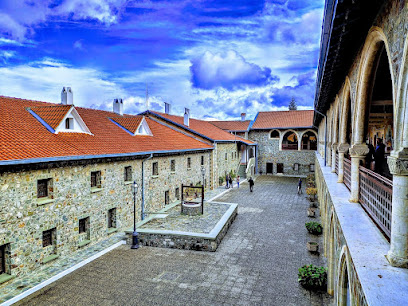
Olympic Supermarket
Explore local flavors and fresh produce at Olympic Supermarket, a beloved grocery store in Geri, Cyprus, perfect for tourists craving authentic Cypriot cuisine.

POW! The Shop
Explore POW! The Shop in Strovolos for a delightful collection of pop-culture memorabilia and unique gifts reflecting the spirit of Cyprus.

Kykkos Tourist Pavilion
Experience a tranquil dining escape at Kykkos Tourist Pavilion, surrounded by the beauty of Kykkos Monastery and Cypriot culinary delights.

JANGO FASHIONS LATSIA
Explore contemporary men's fashion at JANGO FASHIONS LATSIA, where quality meets local style in the heart of Cyprus.

Navy & Green The Mall of Cyprus
Explore Navy & Green at The Mall of Cyprus for unique fashion and local craftsmanship, a true reflection of Cypriot culture.
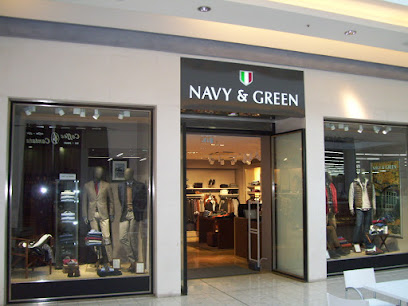
LEPUS Gift Shop
Discover unique souvenirs and local crafts at LEPUS Gift Shop in Latsia, Cyprus—your destination for authentic Cypriot treasures.

Juicy Girls Fashion
Discover trendy styles and unique fashion pieces at Juicy Girls Fashion in Latsia, Cyprus, a shopping paradise for style-savvy tourists.

Create with Magic
Explore Create with Magic in Geri, Cyprus: a charming gift shop offering handmade candles and unique treasures for every craft lover.

tissú boutique
Explore Tissú Boutique in Latsia, where stylish women's clothing meets exceptional customer experience, perfect for every fashion-forward traveler.
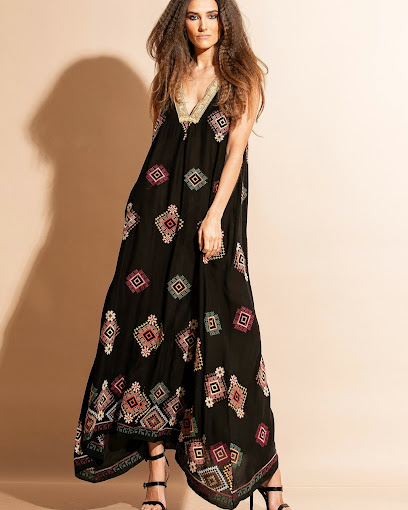
Essential bars & hidden hideouts
The Wooden Pub
Experience the vibrant nightlife and local flavors at The Wooden Pub in Paphos, where great drinks and warm ambiance await you.

Kikos Bar
Discover Kikos Bar in Coral Bay, a lively pub offering refreshing drinks, delicious snacks, and vibrant entertainment amidst Cyprus's beautiful scenery.

Stou Kir Yianni Guest house / Restaurant/Wine cellar
Experience the authentic flavors of Cyprus at Stou Kir Yianni, a charming restaurant and guest house in the heart of Omodos.

Christy's Ben Nevis
Discover the charm of Christy's Ben Nevis in Troodos, where delicious treats meet stunning mountain views, perfect for unwinding after a day of adventures.

Neverland Rock Bar
Experience the vibrant atmosphere of Neverland Rock Bar in Nicosia, where delicious grilled dishes meet an unforgettable nightlife experience.
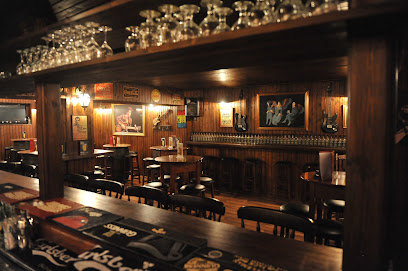
New Division
Experience the vibrant nightlife of Nicosia at New Division, a lively bar offering an extensive drink menu and a warm atmosphere.

Kathikas Square Gin Bar
Discover the vibrant atmosphere and exquisite gin selection at Kathikas Square Gin Bar, a must-visit destination in the heart of Cyprus.
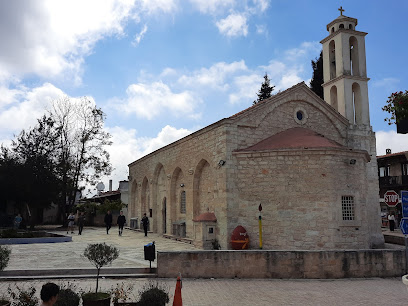
Fereos Restaurant
Experience authentic Cypriot cuisine amidst the breathtaking landscapes of Troodos at Fereos Restaurant.

Byzantino Restaurant
Discover the authentic flavors of Cyprus at Byzantino Restaurant in stunning Kalopanayiotis, where tradition meets modern culinary art.

Silver Star Bar
Discover the vibrant nightlife of Nicosia at Silver Star Bar, where exquisite cocktails and fine wines create unforgettable moments.

Seven Monkeys The Bar
Experience the vibrant nightlife at Seven Monkeys The Bar in Nicosia, where delicious drinks and a lively atmosphere await you.

The Old Souls
Discover the vibrant nightlife of Nicosia at The Old Souls, where cozy ambiance meets crafted cocktails for an unforgettable experience.
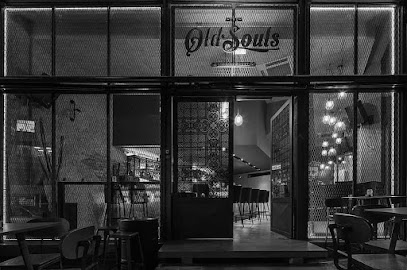
CHEERS BAR
Experience the vibrant nightlife of Nicosia at Cheers Bar, where great drinks and unforgettable moments await you.

Oinou Strata - Luxury Agrotourism Suites & Wine Bar
Experience luxury agrotourism at Oinou Strata, where exquisite suites and local wines await in the heart of Cyprus.

Gates Of Zion
Discover the lively nightlife at Gates Of Zion in North Nicosia, offering a unique blend of classic and signature drinks in a vibrant atmosphere.

Local Phrases about Kykkos Monastery
-
- HelloΓεια σας
[Yia sas] - GoodbyeΑντίο
[Adio] - YesΝαι
[Ne] - NoΌχι
[Ohi] - Please/You're welcomeΠαρακαλώ
[Parakalo] - Thank youΕυχαριστώ
[Efharisto] - Excuse me/SorryΣυγγνώμη
[Signomi] - How are you?Πώς είστε;
[Pos eiste?] - Fine. And you?Καλά. Εσείς;
[Kala. Esis?] - Do you speak English?Μιλάτε αγγλικά;
[Milate anglika?] - I don't understandΔεν καταλαβαίνω
[Den katalaveno]
- HelloΓεια σας
-
- I'd like to see the menu, pleaseΘα ήθελα να δω το μενού, παρακαλώ
[Tha ithela na do to menou, parakalo] - I don't eat meatΔεν τρώω κρέας
[Den troo kreas] - Cheers!Υγεία!
[Iyia!] - I would like to pay, pleaseΘα ήθελα να πληρώσω, παρακαλώ
[Tha ithela na plirosou, parakalo]
- I'd like to see the menu, pleaseΘα ήθελα να δω το μενού, παρακαλώ
-
- Help!Βοήθεια!
[Voithia!] - Go away!Φύγε!
[Fiye!] - Call the Police!Καλέστε την Αστυνομία!
[Kaleste tin Astinomia!] - Call a doctor!Καλέστε ένα γιατρό!
[Kaleste ena yatro!] - I'm lostΈχω χαθεί
[Eho hathi] - I'm illΕίμαι άρρωστος
[Ime arrostos]
- Help!Βοήθεια!
-
- I'd like to buy...Θα ήθελα να αγοράσω...
[Tha ithela na agorasou...] - I'm just lookingΑπλά κοιτάω
[Apla kitao] - How much is it?Πόσο κοστίζει;
[Poso kostizi?] - That's too expensiveΑυτό είναι πολύ ακριβό
[Afto ine poli akribo] - Can you lower the price?Μπορείτε να χαμηλώσετε την τιμή;
[Borite na hamilisete tin timi?]
- I'd like to buy...Θα ήθελα να αγοράσω...
-
- What time is it?Τι ώρα είναι;
[Ti ora ine?] - It's one o'clockΕίναι μία ώρα
[Ine mia ora] - Half past (10)Μισή (10)
[Misi (deka)] - MorningΠρωί
[Proi] - AfternoonΑπόγευμα
[Apoyevma] - EveningΒράδυ
[Vradi] - YesterdayΧθες
[Hthes] - TodayΣήμερα
[Simera] - TomorrowΑύριο
[Aurio] - 1Ένα
[Ena] - 2Δύο
[Dio] - 3Τρία
[Tria] - 4Τέσσερα
[Tessera] - 5Πέντε
[Pente] - 6Έξι
[Exi] - 7Εφτά
[Efta] - 8Οχτώ
[Ohto] - 9Εννιά
[Ennia] - 10Δέκα
[Deka]
- What time is it?Τι ώρα είναι;
-
- Where's a/the...?Πού είναι ένα/το...;
[Pou ine ena/to...?] - What's the address?Ποια είναι η διεύθυνση;
[Pia ine i diefthinsi?] - Can you show me (on the map)?Μπορείτε να μου δείξετε (στο χάρτη);
[Borite na mou deksete (sto charti)?] - When's the next (bus)?Πότε είναι το επόμενο (λεωφορείο);
[Pote ine to epomeno (leoforeio)?] - A ticket (to ....)Ένα εισιτήριο (προς το ....)
[Ena isitirio (pros to ....)]
- Where's a/the...?Πού είναι ένα/το...;
History of Kykkos Monastery
-
Kykkos Monastery, officially known as the Holy Monastery of the Virgin of Kykkos, was founded around the end of the 11th century by Byzantine Emperor Alexios I Komnenos. The establishment of the monastery is linked to a miraculous icon of the Virgin Mary, believed to be painted by the Apostle Luke. According to legend, the emperor himself donated the icon to the monastery as a gesture of gratitude after experiencing divine intervention.
-
The icon of the Virgin Mary, also known as Panagia of Kykkos, is the monastery's most revered relic. It is one of the three icons attributed to the Apostle Luke and is considered to possess miraculous powers. The icon is kept covered in a silver gilt, as it is believed that direct viewing could bring about divine retribution. Pilgrims from all over the world visit the monastery to venerate the icon and seek blessings.
-
During the Ottoman period, Kykkos Monastery enjoyed a significant degree of autonomy and prosperity. The monastery owned vast tracts of land and engaged in various economic activities, including agriculture and trade. This period also saw the monastery becoming a center of Greek Orthodox faith and education, contributing to the preservation of Hellenic culture and traditions under Ottoman rule.
-
Kykkos Monastery played a pivotal role in the Cypriot struggle for independence from British colonial rule in the 1950s. The monastery provided refuge and support to members of the EOKA (Ethniki Organosis Kyprion Agoniston), a Greek Cypriot nationalist guerrilla organization. Many monks and clergy were actively involved in the resistance movement, using the monastery as a base for their operations.
-
Today, Kykkos Monastery remains one of the wealthiest and most influential religious institutions in Cyprus. It is a popular pilgrimage site and tourist attraction, drawing thousands of visitors each year. The monastery complex includes a museum that houses a vast collection of religious artifacts, manuscripts, and icons, offering a glimpse into the rich history and cultural heritage of the monastery.
-
Kykkos Monastery is renowned for its stunning architecture and artistic treasures. The main church, dedicated to the Virgin Mary, boasts exquisite frescoes, mosaics, and intricate wood carvings. Over the centuries, the monastery has undergone several renovations and expansions, blending Byzantine and post-Byzantine architectural styles. The art and architecture of Kykkos Monastery reflect the deep spiritual and cultural heritage of Cyprus.
Kykkos Monastery Essentials
-
Kykkos Monastery is located in the Troodos Mountains of Cyprus. The nearest international airport is Larnaca International Airport, approximately 120 kilometers away. From Larnaca, you can rent a car, take a taxi, or use a combination of buses to reach the monastery. Another option is to fly into Paphos International Airport, which is about 100 kilometers from the monastery. Public buses run from major cities to the Troodos Mountains, but a direct route to the monastery might not be available, so planning ahead or renting a car is advisable.
-
The best way to explore the area around Kykkos Monastery is by car. Car rentals are available at both Larnaca and Paphos airports. For those who prefer public transportation, buses are available from major cities to the Troodos Mountains, but service can be infrequent. Taxis are also an option but may be more expensive. Walking around the monastery grounds is the best way to take in the surroundings, as several paths offer scenic views.
-
The official currency in Cyprus is the Euro (EUR). Credit and debit cards are widely accepted at most hotels, restaurants, and shops around Kykkos Monastery. However, it is advisable to carry some cash for smaller establishments or in case card machines are not available. ATMs can be found in nearby towns such as Pedoulas and Kalopanayiotis.
-
Kykkos Monastery and its surrounding areas are generally safe for tourists. Standard travel precautions should be taken, such as keeping an eye on personal belongings and not leaving valuables unattended. The region has a low crime rate, but it is always best to stay vigilant, especially in more isolated areas or when hiking in the mountains.
-
In case of an emergency, dial 112 for immediate assistance. Local police stations and medical facilities are available in nearby towns such as Pedoulas and Kalopanayiotis. It is recommended to have travel insurance that covers medical emergencies. For minor health issues, there are pharmacies in the nearby towns where you can purchase over-the-counter medications.
-
Fashion: Do dress modestly when visiting Kykkos Monastery. Shoulders and knees should be covered. Avoid wearing revealing clothing. Religion: Do respect the religious nature of the site. Speak softly, and avoid disruptive behavior. Photography inside the monastery is often restricted, so ask for permission. Public Transport: Do be courteous and respectful to other passengers. Eating and drinking on public transport are generally discouraged. Greetings: Do greet people with a friendly 'Hello' or 'Yassas' in Greek. A handshake is also appropriate. Eating & Drinking: Do try the local cuisine, especially traditional Cypriot dishes. Accept food and drink offerings graciously. Don't refuse hospitality, as it is considered impolite.
-
To experience Kykkos Monastery like a local, try to visit during one of the religious festivals, such as the feast day of the Virgin Mary on August 15th. These events offer a unique glimpse into local traditions and cultural practices. Engage with the monks if possible; they can provide valuable insights into the history and significance of the monastery. Don't miss the opportunity to hike some of the well-marked trails in the Troodos Mountains for breathtaking views and a deeper connection to the natural beauty of the area.
Trending Landmarks in Kykkos Monastery
-
Timios Stavros Monastery
-
Millomeris Waterfall Trail
-
Artemis Trail
-
Trooditissa Monastery
-
Monastery of Saint John Lampadistes
-
Troodos Botanical Garden
-
Millomeris Waterfall
-
Church of Saint Nicholas of the Roof
-
Metochi Kykkou
-
Throni
-
Monastery of the Virgin Mary of Arakas
-
Μονή Παναγίας Τρικουκκιώτισσας
-
Museum of Kykkos Monastery
-
Cedar Valley
-
Υψωση Τιμίου Σταυρού
Nearby Cities to Kykkos Monastery
-
Things To Do in Polis Chrysochous
-
Things To Do in Pissouri
-
Things To Do in Paphos
-
Things To Do in Kato Paphos
-
Things To Do in Limassol
-
Things To Do in Kyrenia
-
Things To Do in Nicosia
-
Things To Do in Larnaca
-
Things To Do in Famagusta
-
Things To Do in Ayia Napa
-
Things To Do in Protaras
-
Things To Do in Alanya
-
Things To Do in Batroun
-
Things To Do in Antalya
-
Things To Do in Beirut









